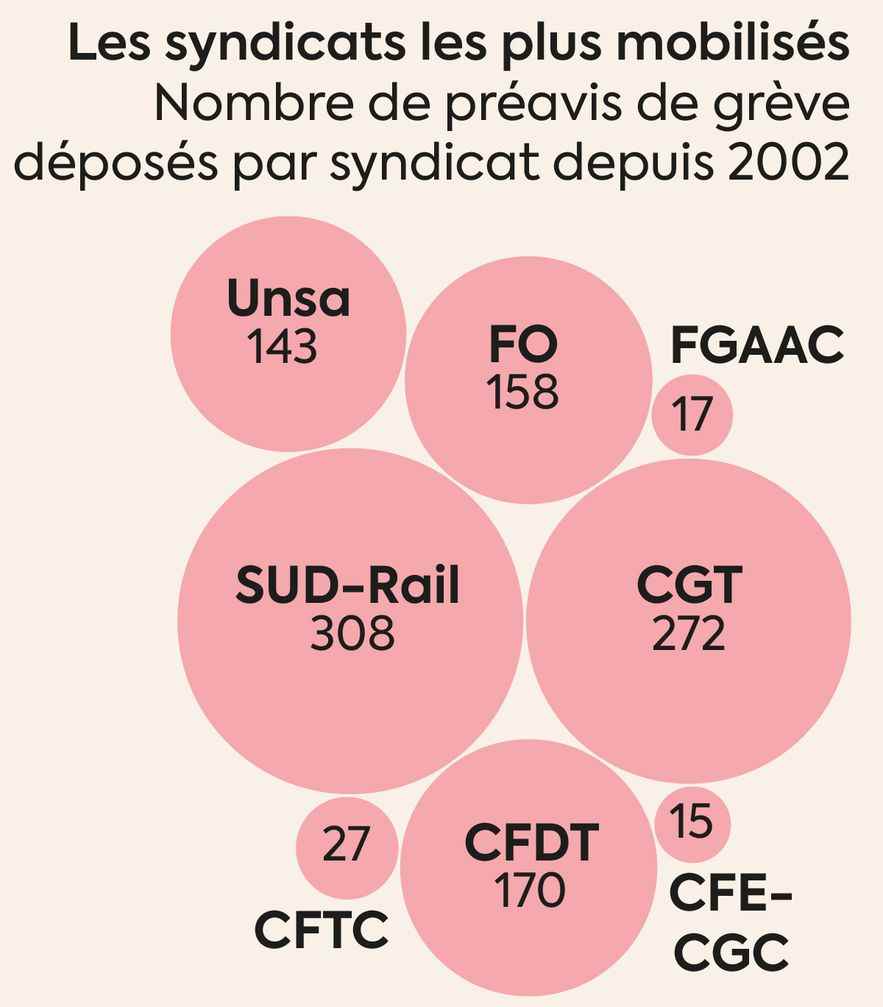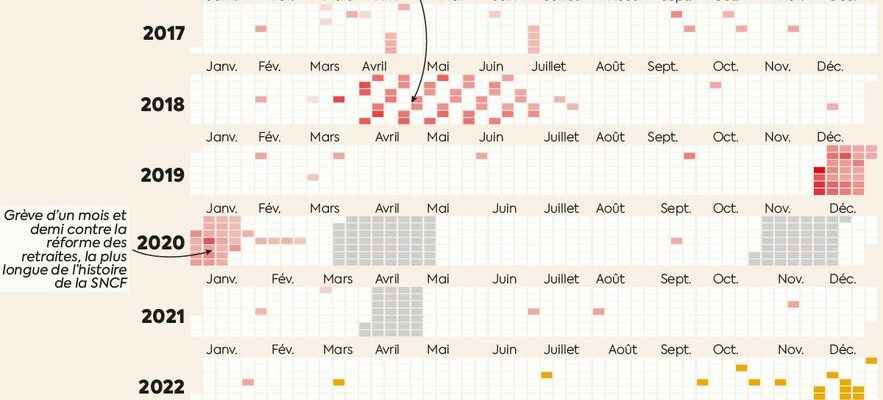Thursday, January 19, France is preparing to experience a new day of social mobilization, in opposition to the pension bill. Among the professions on the front line, SNCF employees will surely figure prominently. Railway workers are indeed among the most mobilized in France. Their company compiles data allowing us to analyze social movements, and whether “the SNCF is still on strike” or not.
In the following graph are represented all the days when arms crossed at the railway company, with a strike rate of up to half of the employees. Last month, strike notice was given on Christmas Day, three years after a similar decision, as part of a wider strike against pension reform. This strike, straddling December 2019 and January 2020, lasted a month and a half, and made it possible to postpone the pension bill (the Covid-19 pandemic also changed the government’s priorities shortly after). Macron’s first five-year term was also crossed by the “dotted” strike of spring 2018 against the railway reform, which had revoked the status of railway worker for new hires.
© / Dario Ingiusto / L’Express
The SNCF is not a company like the others, if we rely on the conflict indicators from the Ministry of Labor. For the latest available data, railway employees were three times more often on strike than the average for national companies.

© / Dario Ingiusto / L’Express
The strikes of December 2022 had the particularity of seeing employees self-organize outside their unions. The sign of growing discredit and a “yellowing vest” of the company? This novelty will undoubtedly create a before and after, as the major trade union organizations are present in the life of the company. If we count the signatories of strike notices for twenty years, SUD-Rail and the CGT are the most mobilized unions, followed by the CFTD, Force Ouvrière and Unsa.

© / Dario Ingiusto / L’Express
As for the reasons for the strike, the theme of pensions is obviously very sensitive: it comes in second place in the reasons for notice filed by the unions since 2002, behind only the more general subject of employment. The mobilizations thus concern “classic” grievances of wage negotiations, such as remuneration, staff or working conditions; but also subjects specific to the company such as freight reform or the status of railway workers. The fact that the word “reform” is the most present in the press releases also deserves to be underlined.
The company also communicates on its history since the post-war period. An interesting indicator makes it possible to calculate “days lost per agent”, i.e. the ratio between strike days and available personnel. It shows the biggest trade union movements of France of the Glorious Thirties, but also the historic strikes of 1995 against the Juppé project of pension reform.

© / Dario Ingiusto / L’Express
Sources: data.sncf.com ; Dares ; newspaper
